4-Day Weekend in Antigua and Barbuda: Sublime Beaches, Hiking Trails, and the Friendliest Folks in the Antilles
Antigua and Barbuda has long drawn sun-starved visitors to its languid, white-sand shores and aquamarine seas, but that’s not the real reason many keep returning year after year. The twin-island Caribbean nation, situated between Guadeloupe and St. Kitts and Nevis, is home to some of the most high-spirited, warm-hearted individuals you could hope to meet. As soon as you step foot in Waladli, the Amerindian name for Antigua, you’ll be encouraged to switch to easy-going island time—but there’s plenty for adventure-seekers, too.
Related: French Riviera Travel Guide: How to Spend a 4-Day Weekend
Despite its small size, Antigua packs a great deal into its 108 square miles, from coastal trails and reefs to a UNESCO World Heritage-listed naval dockyard and lush natural harbor prized among yachties. Its little sister isle of Barbuda, spanning just 62 square miles, is home to one of the world’s largest frigatebird populations. By day, reggae, soca and calypso ring through neighborhoods lined with humble homes painted in flamingo pink, flaming orange, and canary yellow as loc- and braid-wearing locals stop to pick up a homemade meal from street stalls. By night, a chorus of Johnstone's whistling frogs delivers a high-pitched serenade.
Best Time to Visit Antigua and Barbuda
Warm, sunny weather tempered by steady trade winds is guaranteed year-round in this West Indies wonder with temperatures ranging from 73 degrees to the upper 80s. Antigua and Barbuda is busiest between December and April, during the cooler dry season. Early May marks the end of the sailing season and sees a decrease in visitor numbers. Hotel rates drop between June and November during the wet season, when heavy but brief rainfall and evening storms are more common, while higher humidity sets in from August onwards.
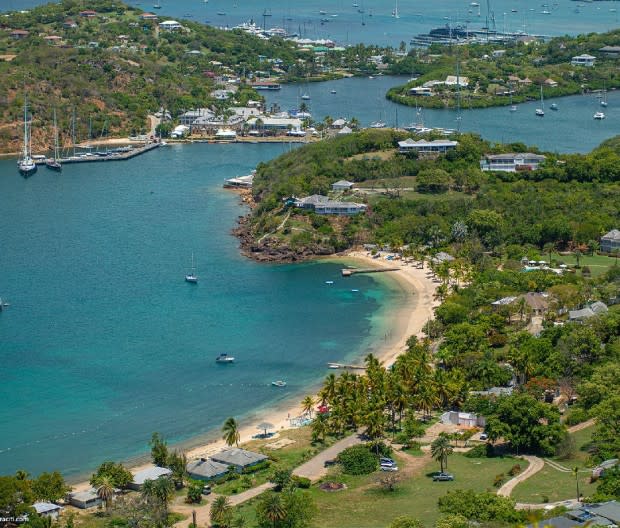
Carlo Raciti Photography
How to Get There
American Airlines and Jetblue offer nonstop flights from New York’s JFK to Antigua’s V.C. Bird International Airport, while United flies nonstop from Newark Liberty. American also operates nonstop flights from Miami and Charlotte, NC. Delta runs flights from Atlanta, and Frontier from Orlando. Antigua’s small size means it takes around 35 to 45 minutes to traverse the island, but take it slow as many roads are narrow and potholed. Traffic is considerable in the mornings, especially near the capital St. John’s, and when schools close.
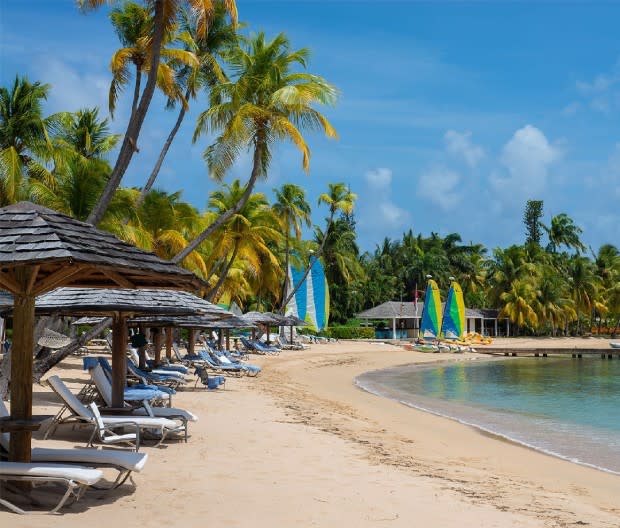
Carlo Raciti Photography
Where to Stay in Antigua and Barbuda
Curtain Bluff
You’re in the Caribbean, so a waterfront stay is non-negotiable. In the 1960s, U.S. war fighter pilot Howard Hulford made his vision of paradise a reality here. Oozing old-school cool, this exceedingly comfortable 72-suite, all-inclusive boutique hotel on the southern coast is legendary. Lazing away the day on Curtain Bluff’s palm-tree studded, white sand beach might sound tempting, but ensure you take advantage of the myriad offerings included in the room rate. Sail a Hobie Cat, go water skiing, or join a reef snorkeling trip. The property’s beachside restaurant, The Sea Grape, offers a buffet and à la carte menu featuring local staples like the flavorful, spicy soup known as “goat water.”
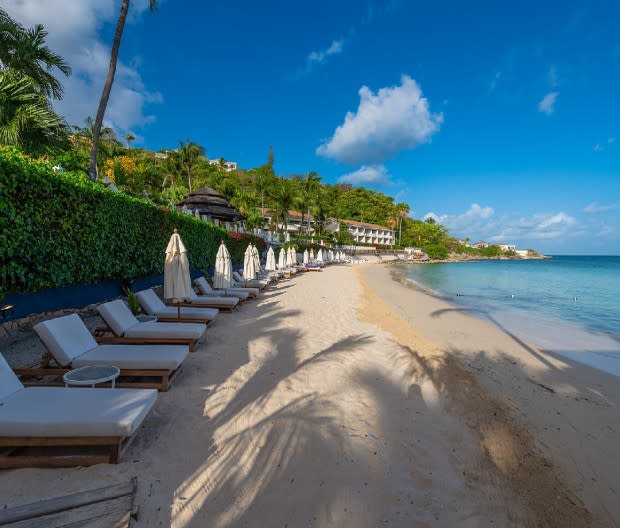
Carlo Raciti Photography
Blue Waters Resort & Spa
Low-key celebs often slip unnoticed into this expansive, 85-room, all-inclusive hotel on the more remote north coast. Hummingbirds, geckos, and mongooses flit across manicured tropical gardens at Blue Waters Resort & Spa. High, white timber ceilings, intimate oceanfront restaurants, and chic bars consistently draw repeat clientele. Dining-wise, The Cove is the high-end option, while The Reef is more casual. Pelican House, an elegant Caribbean-styled villa ideal for parties of up to seven adults, features a pool and BBQ area, a sizable bar with rum restocked daily, and even a semi-private beach below.
Hodges Bay Resort & Spa
Musical artists tend to favor Hodges Bay Resort & Spa, also in the north, so don’t be surprised if you brush shoulders with Wyclef Jean or Ashante at the breakfast buffet. Contemporary works of art grace the lobby, where the welcome is warm and engaging, while an oversize gold-helmeted spaceman sculpture postures on the hotel jetty. Oceanfront junior suites at the resort are cool, modern, and comfortable. Mediterranean dishes dominate White Sands restaurant, while the hotel’s pool parties are especially popular with locals. At nearby Prickly Pear Island, a five-minute boat ride away, swim in gin-clear seas and sip on Antiguan rum cocktails.
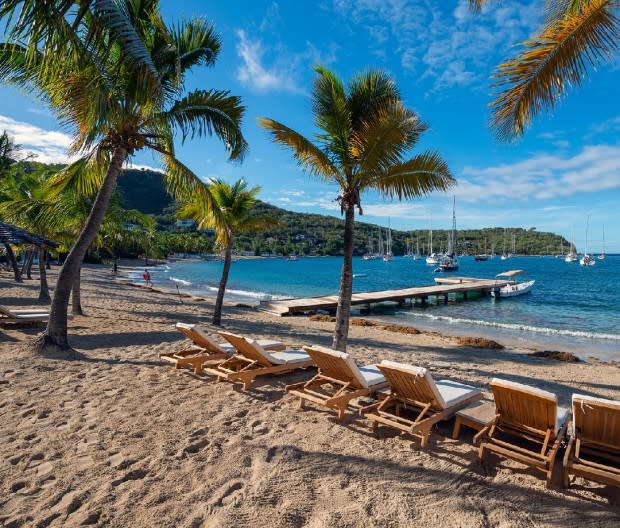
Carlo Raciti Photography
The Inn at English Harbour
Yacht crews who want to be close to the regatta action but prefer to stay somewhere quiet to unwind post-race gather at this sophisticated, 29-room, Georgian-era boutique hotel envisioned and built by a U.S. commercial airline pilot in the 1960s. Situated in Freeman’s Bay on the southern coast, it’s a short boat transfer away from Nelson’s Dockyard. Slumber to the sound of birdsong in one of The Inn at English Harbour’s spacious junior and deluxe suites decked out in antique furnishings. Breakfast is served beachside, with palm trees swaying and sailboats bobbing in the background. Sipping an old-fashioned at the hotel’s atmospheric hilltop bar, adorned with nautical objets d’art, is a must.
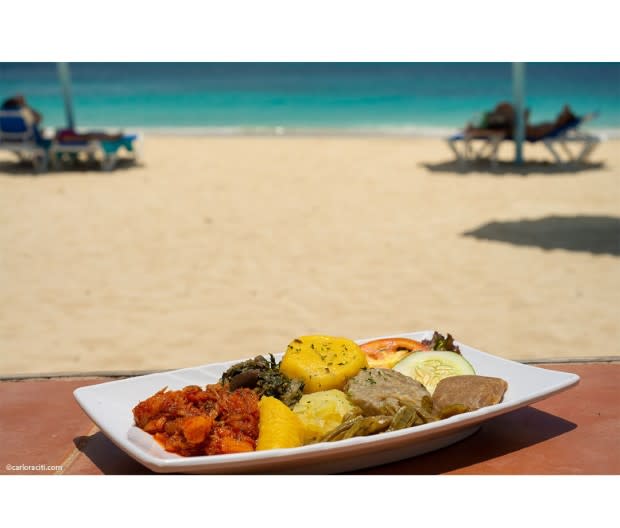
Carlo Raciti Photography
Where to Eat and Drink in Antigua and Barbuda
Antiguans and Barbudans are rightly proud of their culinary heritage. With influences from West Africa, India, Lebanon, Jamaica, and Syria, among other nations, its traditional fare sources ingredients from the sea and land and seasons them elaborately. Sample classic dishes as well as contemporary interpretations of wider Caribbean cuisine.
Antigua Vintage Tea House: Situated in the gardens of Mount Tabor Retreat, this breezy oasis is a clever blend of English sensibilities and Caribbean spice perfect for a hot day’s brunch. Munch on an islander's lunch of goat cheese, artisan bread, plantain chips, pineapple and mango chutney followed by fluffy gingerbread cake with warm rum sauce.
Papa Zouk: Tucked down a quiet St John’s street, this inconspicuous “fish and rum shop” is a mandatory stop for serious foodies. Eccentric film producer and rum connoisseur Bert Kirchner describes the party spot, where zouk rhythms bounce off vibrant murals, as Little Dominica. Don’t miss self-taught chef Karen Mayres’ ambrosial bouillabaisse-gumbo and crispy fried red snapper, sealed with a ganja rum nightcap.
The Mangrove: French and Caribbean flavors fuse eloquently at secluded beachfront boutique hotel Barbuda Belle’s restaurant. Cool off in serene aquamarine waters before sampling the signature punch. If in season, sample Creole-style Barbudan lobster, which is sweeter and larger than Maine’s. The Mangrove also serves a fine conch burger and exceptional stuffed mussels.
The Fox House Restaurant & Bar: This homely locals’ hangout serves Caribbean Creole cuisine on an outdoor deck amid lush gardens. Start with a pineapple, passionfruit, and jalapeno-infused rum cocktail then progress to a lemongrass-laced seafood creole pot. Follow up with a West Indian conch curry or Antigua black pineapple-marinated pork chops.
Boom!: Located at Gunpowder House & Suites, this buzzy open-air poolside dining spot looks out over Nelson’s Dockyard and is ideal for a light lunch and cocktails. Starters include Thai shrimp cakes and ahi tuna tartare with mango, avocado, and ginger, while jerk baby back ribs and grilled Antigua lobster count among the mains.

Carlo Raciti Photography
Darkwood Beach Bar and Restaurant: Located at Darkwood Beach in St Mary’s, this laidback fave spotlights daily traditional Antiguan dishes like a piquant saltfish made with ling fish and mackerel, accompanied by seasoned sweet potato dumpling (ducana). Wash it down with tangy tamarind juice.
Wild Tamarind: Schedule a sunset dinner at this stylish Mediterranean restaurant, located within Tamarind Hills Resort on the southwest coast where views of Ffryes Beach come bathed in scarlet, pink, and orange in the evening. Chef Alessandro Moncada’s comforting menu features a creamy risotto with sunflower seeds and truffle and a smoky rib eye.
Gather Steakhouse: Enjoy expertly-chargrilled prime Black Angus cuts at this cozy spot in Dutchmans Bay on the northeastern coast. Pair a filet mignon or Manhattan with crisp onion blossom, truffle parmesan fries, and charred broccolini. A steel pan musician livens up the joint on Sundays.
Sheer Rocks: Impress your partner with an infinity pool dip at this bar-restaurant hovering above silvery cliffs as the sun dips into the sea. Snack on spinach and sumac falafel and other Middle Eastern mezze while sipping potent, cinnamony old-fashioned rum punch.
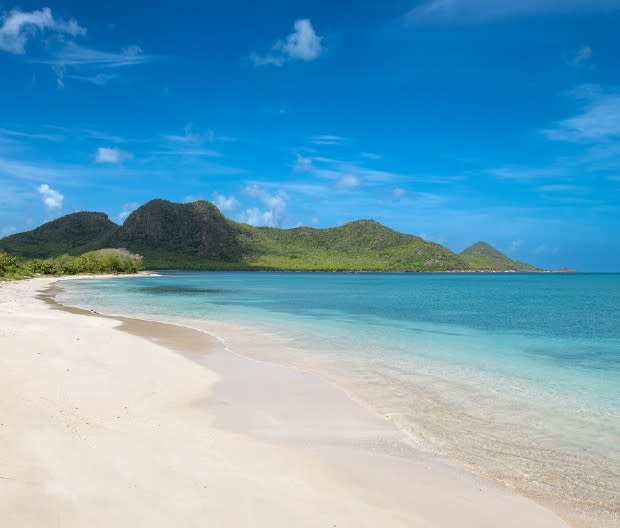
Carlo Raciti Photography
What to Do in Antigua and Barbuda
Antigua’s claim to fame is, undoubtedly, its beaches—said to number around 365—conveniently, one for each day of the year. But there’s plenty more to see and do, whether you’re an action junkie, history and culture buff, or foodie. Join a 4x4 safari through Antigua’s countryside and rainforest, go kayaking among mangroves, sail between remote beaches on a catamaran, try reef snorkeling or swim with stingrays—and the adrenaline rush doesn’t end there. Hike the trails of the Wallings Nature Reserve on the southwest coast, which forms part of Antigua’s Green Corridor, go fishing for tuna and wahoo in the Atlantic, or fly high over the volcanic isle’s forests, turquoise seas and reefs.
Trace the troubled history of Antigua, which the British colonized in 1632, bringing Africans to work as slaves on profitable sugar plantations, alongside a strategic naval dockyard that helped build the British Empire. Even when slavery was abolished in 1834, many of the enslaved weren’t financially free and had to continue working under brutal conditions. Ruins of forts and sugar mill towers scattered across the island bear witness to centuries of colonial power dynamics and labor exploitation. Antigua and Barbuda gained independence in 1981, while remaining a member of the Commonwealth.
Related: 4-Day Weekend in Tasmania, Australia
Proud of their ancestors’ resilience and heritage, whose legacy is evident in their patois, food, music, and traditions, Afro-Antiguans celebrate emancipation with an exuberant annual carnival held in July-August.
Four fun-filled days on this fascinating, twin-island micro-state will just make you want to return to dig deeper—but our perfect, first-timer’s guide to Antigua and Barbuda covers some serious ground at a relaxed Caribbean pace. If you can squeeze in another day or three, tailor accordingly with this full range of tours and activities at Visit Antigua and Barbuda.
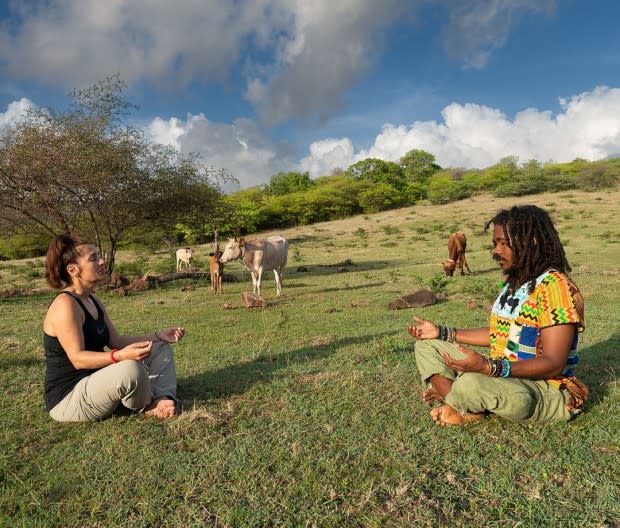
Carlo Raciti Photography
Day 1: Get Your Yoga on, Hike, and Beach-hop
Ease into your Antiguan adventure with an early morning limb-loosening yoga session led by Malique “King” Williams amid curious cows in a farmer’s field. The former Olympic swimmer and his wife Ashante, a vegan chef, run Amenta Wellness Journeys. Spending just a few hours with the couple, who share their slow-living philosophy through customized well-being experiences, is guaranteed to lower stress levels. A barefoot Malique leads hikes of locations like Greencastle Hill, an important indigenous site featuring unusual megaliths and 360-degree views of surrounding valleys and towns.
A bone-jangling car ride down rural dirt roads leads to an Eden-like secret sandy bay with crystalline waters. There, Ashante lays out a luscious spread of fruit-filled cakes, bars, and other delights that may well convince you to go plant-based.
Continue your coastal recon with a swim at Darkwood Beach, where umbrellas in primary colors dot sugar-white sands. Here, the sea’s emerald hues are the very definition of a filter-free Caribbean.
Related: Best Tropical Islands to Work Remotely for Extended Stays
Head north along the western coast, which hosts some of Antigua’s most spectacular beaches. Powdery white sands and tranquil waters make Ffryes Beach a firm favorite among locals and visitors. A low hill separates it from smaller but no less impressive Little Ffryes.
Next up, long, lithe Jolly Beach beckons thalassophiles with its serene seas that take on an impossibly luminous shade of turquoise. From here, Montserrat and Nevis are visible on a clear day.
Sailors seeking a protected anchorage drop the hook at Deep Bay beach, an isolated beach in the northwest. Bring your own shade and supplies plus proper shoes for the hike to a hilltop fort affording mesmerizing views.
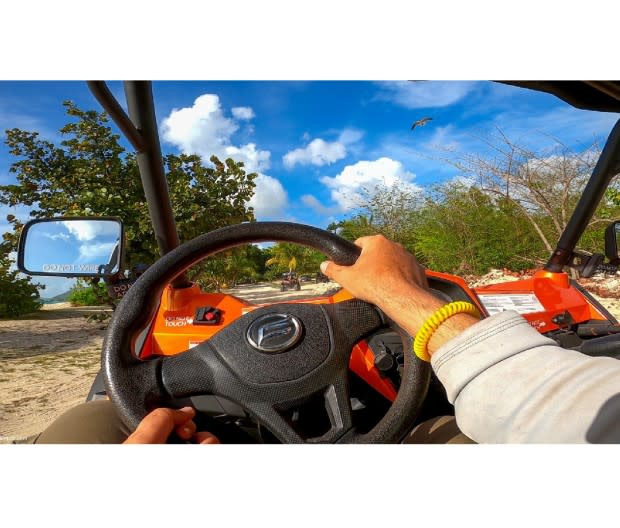
Carlo Raciti Photography
Day 2: Visit a Rastafarian Village, Ride an ATV, and Go Ziplining
If you’ve ever wanted to learn about the oft-misunderstood Rastafarian way of life, book a visit to Ras Freeman. The Rastafari community focuses on worship, sustainable farming, natural living, and self-sufficiency. Its location on a former plantation in Liberta (meaning liberty), one of the first Antiguan villages to be freed from slavery, imbues it with layers of meaning. Ras Richie and Empress Tia host eco-conscious tours of fruit, vegetable, and government-authorized sacramental cannabis crops, as well as remnants of the old slave house and sugar cane mill. Their goal is to contribute to the country’s food security, convey the benefits of cannabis, and safeguard the nation’s history and culture.
Related: Italy’s Amalfi Coast: 4-Day Weekend Travel Guide
Opt for an alternative high with a zipline tour through the tree canopy of some of Antigua’s last remaining rainforest over 300 feet above the ground. Antigua Rainforest Zipline Tours’ most thrilling route encompasses 13 ziplines, suspension bridges and tree houses. In the afternoon, take a guided ATV tour of the island with Salty Dog Adventures. Don wraparound sunglasses and a neck gaiter and prepare for a dusty onslaught. You’ll navigate a mixture of dirt trails and asphalt, through farmland and forest and along the coast. Stops may include Pigeon’s Point Beach, where you can take a dip and wash off the dust.
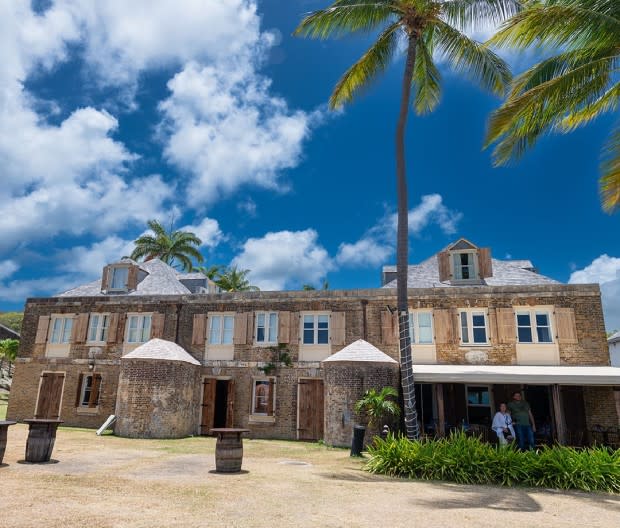
Carlo Raciti Photography
Day 3: Delve into History and Savor Sky-high Views
In the south lies English Harbour, where the Antigua Naval Dockyard was built in the 1700s. By the mid-18th century, British naval forces considered the harbor and dockyard strategic to their wars against the French, who sought to expand their territory in the Caribbean. Horatio Nelson, a youthful Royal Navy captain who later became Britain’s most celebrated commander, was stationed there in the late 18th century and infamously described English Harbour as “an infernal hellhole”.
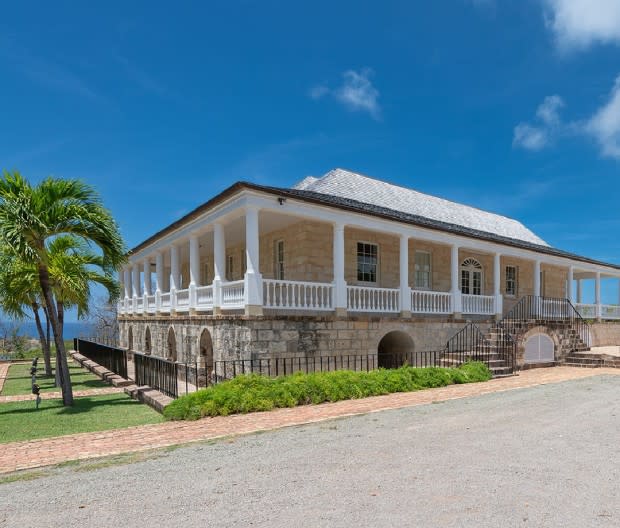
Carlo Raciti Photography
A UNESCO-listed World Heritage site since 2016, the dockyard’s stone buildings, erected between 1780 and 1820, have been restored and house hotels, a museum, shops, and harbor operations. Baptised Nelson’s Dockyard in the 1930s, it has since drawn countless British visitors and sailors, in particular. It’s especially impressive at night when mast lights illuminate sleek classic ketches and superyachts.
For further insight into the privileged lives of Britain’s top brass in the 19th century, book a tour of Clarence House, built on a hill above the dockyard. Painstakingly restored, it features a melding of Caribbean vernacular, Georgian trends, and Victorian elements. Polished antique furnishings exemplify the craftsmanship of Antiguan artisans.
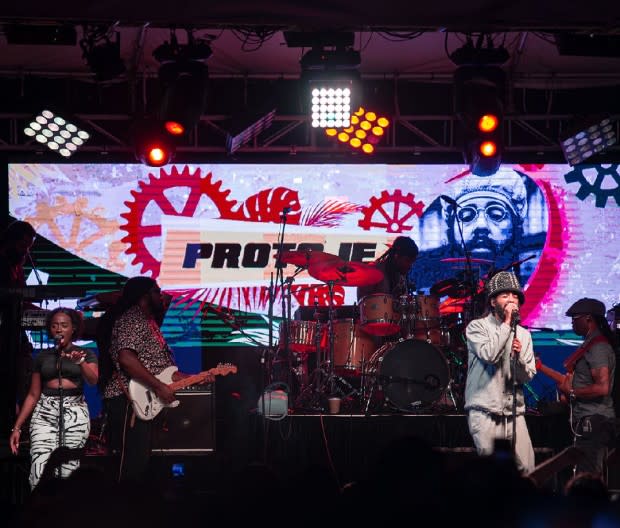
Carlo Raciti Photography
The dockyard is at its liveliest during Antigua Sailing Week, one of the Caribbean’s best-loved regattas, held in April-May. A mid-regatta concert known as Reggae in the Park is staged there, showcasing artists like Damian Marley and Maxi Priest. For panoramic harbour views, head up to the Shirley Heights Lookout. On Sundays, sunset is celebrated with smoking barbecues and a steel pan band and reggae group.
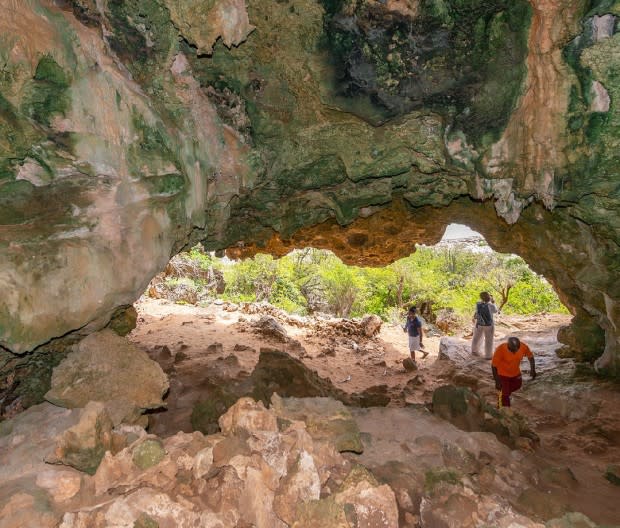
Carlo Raciti Photography
Day 4: Admire the Birds and Pink Beaches of Barbuda
In 2017, Hurricane Irma devastated tiny Barbuda. Evidence of its widespread destruction is still evident, with homes still missing roofs and other buildings lying in ruins. But the island’s 1800 residents are a tough bunch intent on rebuilding and re-establishing their lives. Support Barbuda’s recovery by spending a day exploring its well-hidden riches.
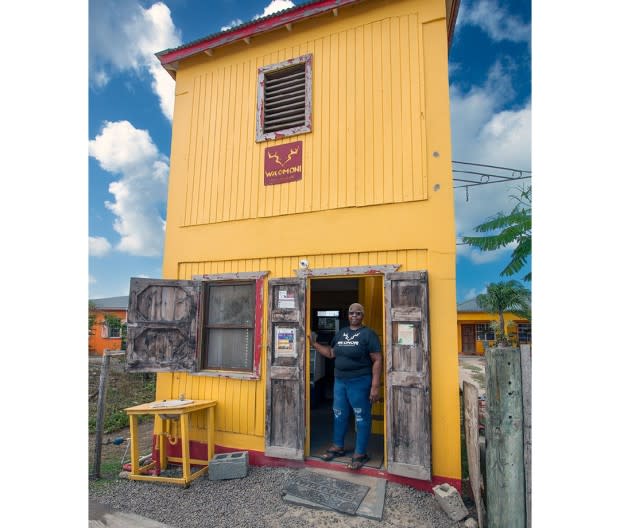
Carlo Raciti Photography
Take an early morning ferry from St. John’s, which reaches Barbuda in 90 minutes. Make a breakfast pitstop at Jacque Beazer’s Wa’Omoni, a street food-style joint that serves a fine deer burger. Next, head to Two Foot Bay Caves, on the Atlantic-facing northeastern coast, for a hike amid fossil-filled rocks. Keep an eye out for ancient petroglyphs dating back to the Arawaks.
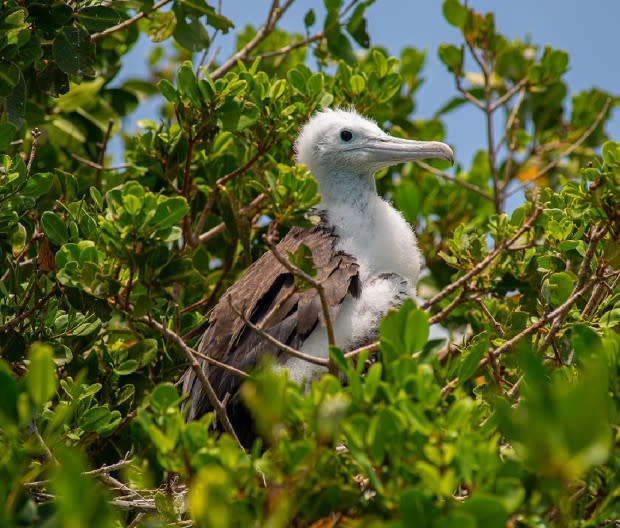
Carlo Raciti Photography
Barbuda is home to one of the world’s largest colonies of frigatebirds, numbering over 5,000, in Codrington Lagoon. If you’re lucky to visit these magnificent seabirds during mating season, you’ll see female adults swooping back and forth tossing fish into the gaping mouths of insatiable chicks. Males are recognizable by their red throats which they puff out to attract females. Tours should be booked in advance.
Beach connoisseurs won’t want to miss out on swimming at Barbuda’s 17-Mile beach or the white and coral-pink sands of Princess Diana beach, renamed in honor of the ill-fated royal who relished anonymity and privacy on her frequent vacations here.
